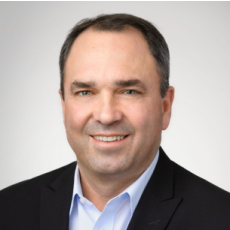This interview is focused on Arkema’s semiconductor operations in the U.S.
What does the semiconductor industry mean to Arkema?
Semiconductors are a crucial growth pillar for Arkema with several businesses contributing significantly to this area. PVDF, for example, is heavily involved in constructing fabs. This material is ideal for extreme conditions, offering longevity and resistance to chemical attacks, making it essential for fabs. Its purity and natural flame resistance make it the preferred choice. Additionally, we lead in the fluorination of etch gases, facilitating a shift to lower global warming potential etch gases. This helps chip producers create more sustainable chips, reducing waste emissions and enabling advanced miniaturization. We also provide cleaning solutions in the hydrogen peroxide area and adhesives used in chip manufacturing. Our recent acquisition of PIAM (PI Advanced Materials) enables us to produce polyamide for flexible chips and backings, further serving the semiconductor industry.
What is the semiconductor industry demanding right now, and, as a result, where are you looking to expand over the next couple of years?
The industry is experiencing significant growth, particularly with the shift towards more advanced, double-stacked, and miniaturized chips. In the U.S., the focus is on building fabs and expanding with the support of the CHIPS Act. For our customers, consistency of supply is crucial. They value working with a company that understands market and quality needs, ensuring reliable supply to avoid production disruptions. Innovation is also highly valued, especially innovations that enhance sustainability. We aim to reduce our manufacturing footprint while enabling our customers to produce more sustainable chips with less waste and faster production times, leading to more sustainable supply chains.
At Semicon West, you showcased Kynar® and Kynar Flex® PVDF. For someone unfamiliar with these products, what differentiates them in the market?
Kynar® products stand out due to their purity and the different grades we offer for various applications. Our ability to use these materials in areas like 3D printing and produce parts with fine aspect ratios is a significant advantage. Additionally, our global supply network and leading edge in emulsion PVDF production allow us to create high-performance polymers consistently. This capability is crucial when fabs are built and demand spikes, as our production capacity across multiple regions enables us to meet these demands effectively.
Demand is going through the roof. How do you move quickly enough to deliver without over-promising?
Balancing supply and demand is a constant challenge. Having the right products at the right time is crucial because once a fab is built, changes are costly. We need to work closely with partners to stay aware of market trends. The semiconductor market's predictions for next year are extremely optimistic, which means we need to ramp up quickly. Fortunately, Arkema's global supply network and ability to produce for various markets give us agility. We produce in multiple regions, allowing us to shift production as needed.
As we establish new plants, making production operations more reliable involves reducing waste and improving recycling processes. Efficiently running fabs is essential, and our PVDF and PEKK materials contribute by allowing for innovations like 3D printing parts for use in fabs. The industry is becoming more sophisticated not only in chip production but also in the manufacturing processes.
How does the U.S. semiconductor ecosystem compare to those in Europe and Asia, particularly regarding collaboration between academia, government, and industry?
Before the CHIPS Act, the U.S. market was driven more by competition than government direction, unlike in Singapore, China, and Europe, where there's more government involvement. The CHIPS Act has accelerated collaboration by incentivizing companies to apply for government grants together. This fosters partnerships among multiple entities, facilitating growth. However, the U.S. still primarily relies on market demand to drive trends, whereas other regions have more organized government involvement. The CHIPS Act has shifted the U.S. towards greater collaboration by encouraging joint applications for government grants. This contrasts with more government-organized efforts in other regions. The U.S. remains market-driven, but the CHIPS Act helps accelerate partnerships and industry growth by incentivizing collaboration.
The CHIPS Act and geopolitical factors drove the need for onshore supply. This legislation accelerated investment decisions, de-risks investments, and provided government-backed support for new fabs. This enabled companies to take calculated risks, knowing there is backing for their investments, facilitating quicker construction starts and capacity expansion.
Chemical companies often make investments years in advance to meet future demand. What investments will Arkema be making in the next few years?
Our strategy involves mixed optimization and targeted acquisitions, like our recent acquisition of PI Advanced Materials, to expand our portfolio. We will also explore how our current products can meet semiconductor purity requirements. For example, hydrogen peroxide used in pulp and paper has different standards than in semiconductors. Similarly, we are assessing our etch gases and cleaning products for semiconductor applications. Optimizing our product mix and improving purification techniques will allow us to meet high purity demands efficiently. Investments will focus on expanding our portfolio through acquisitions and adapting current products for semiconductor use. We will also invest in improving purification techniques, either internally or through partnerships, to meet the high purity standards of the semiconductor industry. This approach minimizes capital investment while ensuring we can meet the industry's needs.





